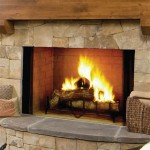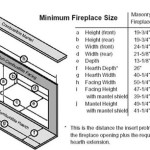Antique Iron Fireplace Grates: A Timeless Element of Hearth Design
Antique iron fireplace grates represent a significant aspect of historical interior design, serving as both functional components and decorative focal points within a hearth. These grates, forged from iron, a durable and readily available material during their eras of production, reflect the craftsmanship and aesthetic preferences of past generations. Understanding their history, construction, and value requires an appreciation for the context in which they were created and used.
The primary purpose of a fireplace grate is to elevate the burning fuel, typically wood or coal, above the hearth floor. This elevation facilitates airflow beneath the fuel, promoting more efficient combustion and generating greater heat output. Without a grate, a fire would tend to smolder and smoke excessively, reducing its effectiveness as a heat source. Beyond their functional role, antique iron fireplace grates often showcase intricate designs and embellishments, reflecting the artistic sensibilities of the period in which they were made.
Evolution of Fireplace Grate Design
The design of fireplace grates has evolved significantly over time, mirroring advancements in metalworking techniques and shifts in prevailing aesthetic trends. In the earliest iterations, grates were often simple and utilitarian, consisting of basic bars arranged in a grid pattern. These early examples, found frequently in colonial-era homes, prioritized function over ornamentation. As metalworking technologies advanced, more elaborate designs became possible. Foundries began producing grates with ornate scrollwork, geometric patterns, and even figural representations.
The Victorian era, in particular, witnessed a flourishing of decorative ironwork. Fireplace grates from this period often feature intricate castings of floral motifs, mythological creatures, and scenes from nature. These grates were not merely functional objects; they were considered works of art, intended to enhance the overall aesthetic appeal of the fireplace and the room in which it was located. The size and scale of grates also varied depending on the dimensions of the fireplace opening and the intended fuel source.
The materials used in the construction of antique fireplace grates varied depending on the intended use and the prevailing economic conditions. Cast iron, known for its durability and ability to withstand high temperatures, was a common choice. Wrought iron, which is more malleable and can be shaped into more intricate designs, was also used, particularly for decorative elements. Some grates incorporated steel elements, providing added strength and resistance to corrosion. The finish applied to the iron also varied, ranging from simple black paint to polished surfaces or even decorative patinas.
Identifying and Assessing Antique Fireplace Grates
Determining the age and authenticity of an antique fireplace grate requires careful examination of several key features. The design of the grate itself can provide clues about its period of origin. Certain patterns and motifs are characteristic of specific historical eras. For example, Art Nouveau grates often feature flowing lines and stylized floral designs, while Art Deco grates tend to incorporate geometric shapes and symmetrical patterns. The presence of maker's marks or foundry stamps can also be invaluable in identifying the grate's origin and date. These marks, often stamped into the iron casting, can provide information about the manufacturer and the specific model of the grate.
The construction techniques used in the grate's manufacture can also offer insights into its age and authenticity. Early grates were often hand-forged, with individual components riveted or welded together. Later grates were more likely to be cast in molds, resulting in a more uniform and mass-produced appearance. Evidence of hand-tooling, such as file marks or hammer blows, can indicate that a grate was made before the advent of modern manufacturing processes.
The condition of the grate is another important factor to consider. Rust and corrosion are common problems with antique iron objects, and the extent of the damage can affect the grate's value and functionality. Minor surface rust can often be removed with careful cleaning and restoration, but severe corrosion can compromise the structural integrity of the grate and render it unsafe for use. Repair work, such as welding or patching, can also affect the grate's value, particularly if the repairs are not done sympathetically to the original design.
The Value and Preservation of Antique Fireplace Grates
The value of an antique iron fireplace grate depends on a variety of factors, including its age, design, condition, and rarity. Grates with elaborate designs, those made by well-known manufacturers, and those in excellent condition tend to command higher prices. The historical significance of the grate can also play a role in its value. A grate that was once owned by a prominent historical figure or that is associated with a particular historical event may be worth significantly more than a comparable grate without such provenance.
Preserving antique fireplace grates requires careful attention to their care and maintenance. Regular cleaning can help to prevent the buildup of rust and corrosion. A soft brush and mild soap are generally sufficient for removing dirt and grime. A specialized iron cleaner can be used to remove more stubborn stains. Applying a protective coating of wax or oil can help to prevent rust from forming. It is important to avoid using abrasive cleaners or harsh chemicals, as these can damage the iron surface and remove any original finishes or patinas.
If a grate is damaged, it is often possible to repair it. However, it is important to seek the services of a qualified metalworker who has experience working with antique iron objects. Inappropriately executed repairs can damage the grate and detract from its value. When possible, it is best to preserve the original finish and patina of the grate, as these features contribute to its historical character. Replacing missing or damaged parts with reproductions is also an option, but it is important to ensure that the reproductions are accurate and sympathetic to the original design.
The enduring appeal of antique iron fireplace grates lies in their combination of functionality, artistry, and historical significance. These objects offer a tangible connection to the past, providing a glimpse into the lives and tastes of previous generations. By understanding the history, construction, and preservation of these grates, individuals can appreciate their value and ensure that they continue to grace homes and inspire future generations.
Eclectic Red Barn Antique Fireplace Grate Decorated For

17 Wide Small Cast Iron Fireplace Wood Fire Grate

Regency Cast Iron Antique Fireplace Grate English Circa 1830 Antiques

Liberty Foundry 20 In Cast Iron Heavy Duty Fireplace Grate With 4 Clearance G800 Bx The Home Depot

Antique Fireplace Log Grate H806 Charles Nijman Antiques

Vintage Cast Iron Fireplace Insert Grate Basket Accessories Home Decor Lovebirds Rustic Lighting Heavy Black Gold Birds

Replacement Grates For Cast Iron Fireplaces

Antique Cast Iron Fireplace Grate Log Cradle Holder 1880s Era

24 Inch Fireplace Grate Cast Iron Log Rack Heavy Duty Steel Holder 3 4 Bar Fire Grates Wrought Wood Stove Firewood Burning For Indoor Outdoor Chimney Com

Best Cast Iron Fireplace Grates Hy C








